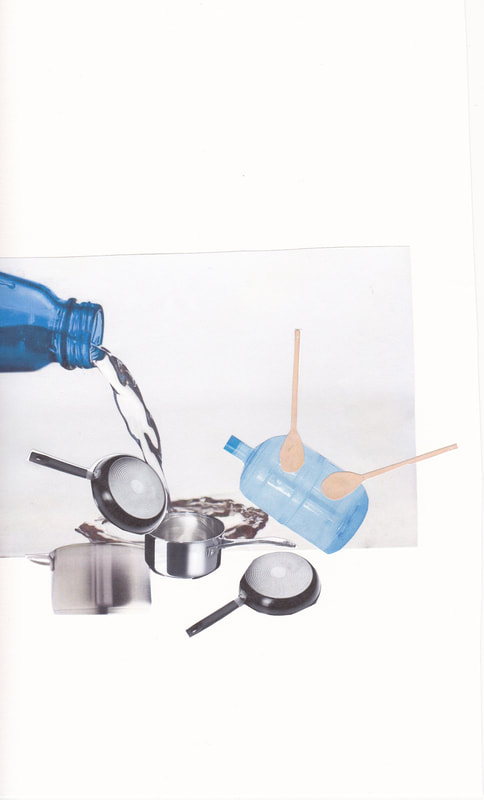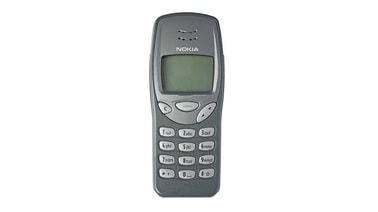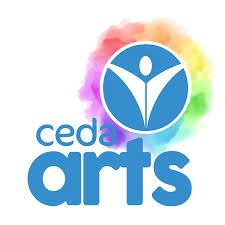|
I'm now on Patreon, I hope to gain more support so I can build up the correspondence collective with Clayhill Arts, this community outreach project will be funded through my page at the moment any support will go towards, workshops, zoom meetings and printed materials as well as collage packs to be posted out to people.
Having the collective with allow for people to stay connected via the postal system, I hope that by collage making and postcard sending an arts community can be built up in these strange times. All profits will go into funding this, I am extremely passionate about the mail art movement as well as working with the community, if I can get this project off the ground it will be an ongoing collective that I aim to grow international interest with. Let's keep making art and get those people who feel isolated connected again, in these strange times, https://www.patreon.com/amandalynchart On BBC iplayer I have recently watched the secret history of writing, a series that I was hooked on once I started watching it. I was most interested in the way that images have always been within our visual language of communication. What strikes me most over the course of this TV series is how technology has changed us. It raised some questions for me such as are we going to have more dyslexic people as images and predictive text takes over? It has taken centuries for us to use the text and writings we know of today, however are our technological ways pushing us backwards to a regressive image state? I have spoken with a younger family member (late teens) and asked them what is the main method of communicating with friends. The answer did surprise me, memes ,voice notes and emoji conversations, no written words at all but a whole page of memes expressing emotions and answers to produce everyday conversations.
I'm not surprised to some extent that everyday conversations have come to image messages rather than written text, however I am intrigued that with the need for instant messaging with our younger generations that letter writing and postcard sending has boomed since the Covid-19 pandemic. Sending something in the mail to someone who has to wait for it, days, weeks even to arrive gives the dopamine hit we need. Images have always been a universal language and artist Xu Bing took this to another level using just emojis he was able to convey conversations with people from different language backgrounds and each of these people were able to read what the images meant just from seeing these images, images that appear so freely now on mobile devices, an everyday way of communicating. I suppose I want to question have/are we going full circle starting with image depictions to now using them more than writing. What does this mean for our future generations? The series The secret history of writing on the BBC iplayer. (BBC four) #Soundsfromhome, a project working with Ceda Arts, during the Covid-19 pandemic. Over the next month I am working with Ceda arts exploring sounds from home. As lockdown eases up now, it has really made me reflect on the being locked down and locked in. My recent work was taking notice, listening and slowing down. As I did this I was able to notice sounds that I couldn't quite tell if I knew what these were. Some sound from the outside world I could hear but not see. The above images are collages I have been making in response to the sounds I have heard, some of the images are alot larger than they would be in real life but this is to show that some of these sounds where overwhelming.
With lockdown being eased now I have noticed a change to the sounds I can hear. The normal week day has become quieter as I remain at home and people I assume have gone back to work. The flat blocks everyday has become quieter, slower some days it seems almost so still I have to really listen hard to see if there is anything happening other than the wind. I was surprised that July 4th was not over powering with sound it was actually so silent I felt the atmosphere was almost eerie. This strange quite I shocked to hear or not hear. I have noticed that some days in the week are extremely quite now it seems like the flat block pauses until the early evening. And then there are other days where my surroundings are so alive I struggle to pick out one or 2 sounds but a mixture of life, that again I find hard to pull out everything I know, from car sirens, child shouting, wind and what I think are construction noises from a distance it gives me this strange sense of disconnect from one day to the next. Making collages has meant making sure I am always listening, taking notice of sound changes before Covid-19 I probably wouldn't of paid that much attention to them. It's funny the kinds of patterns you notice after a while, Mondays seem quite, Tuesdays are non stop with sounds in the early morning and then late afternoon, Wednesday afternoon seems busy, Thursdays alot of birds, Friday mid afternoon the flats become alive with music. The weekend is an odd some its very up and down and I cant really pick if they are quite or noisy as it is a complete mix. This is my last pattern I noticed from a week ago. I am making recordings on the busy days taking 30 seconds here and there and then listening to it as a whole piece making collages in response to the whole day, if the sounds are few and far between. It is a great way to see what I think I am hearing and I am enjoying the work so far. Still a big learning curve with recordings as I have never used sound before this project. Stay tuned for more... I have recently turn't the big 3-0h! And I started to wonder what these strange Covid-19 times would be like 30 years ago. It was the dawn of the 1990s and technology was really in its birth, it is strange to think that Windows 95' launched 25 years ago. But now living in a digital age where we have access to the millions via, social media, apps, and the internet allows us to make connections for even what was a simple task like watching tv. This 'I need it now' culture has made us wanting for the immediate, our patience are dwindling in the light. It really made me think of how even with all this access with our online culture, how many of us still feel lonely and isolated. With Covid-19 a study has been released 3/4/2020 to 3/5/2020 showed that young people ages 16-15 are most effected today by loneliness. I found this shocking as people in this age bracket are 50.8% more likely to be effected with loneliness with Covid-19, yet this age group are also the most active on social media and other digital app platforms. Compared to a survey from 2010 (Griffin 2010) there is a 7% increase in lonely people in UK even looking at this from a decade ago I am still stunned that with our technology advancing why are we as a nation becoming more lonely and isolated.
The reason for this question is that as I approached the big 3-oh! I reflected on how Covid-19 could of impacted us if it had come 30 years ago. In an article written in 1998 titled 'Loneliness an epidemic in modern society' -Colin Killeen highlights that being lonely is a modern age problem, a problem that seems to only be getting alot worse as our modern era becomes more connected as individuals we are being becoming more disconnected. I am interested in disconnect in our singular society (it's all about me). Our community 30 years ago were stronger, but I do think was it easier to cope with less distractions in the 1990s. I remember our huge box tv with a few channels and I was lucky enough to have a Playstation one console roughly in 1999. We didn't have communication tools we do today like Whatsapp and instant messaging. Was it easier having less technology? Would we cope better if we had less distractions and where not so connected? These are just some things I have been thinking about with Covid-19. I know that living more simply suits better than being in the rat race of our digital age. Having some disconnect has been good for me personally. Online tools and resources are a saving grace, for seeing family on facetime for instance, and I am diffidently not anti technology. But I wonder how we would of coped in a pandemic hit 30 years before. It is an interesting thought and something I am thinking of. Staying connected to family and friends is important and in this digital age we need that. However there has been a resurgence of mail art, penpals and letter writing. Mail art, penpals and letter writing seems to be considered as an dying art, when did anyone send a hand written letter to someone. With Covid-19 people have taken the time to stay connected and make new friendships with modern day Penpals. I have found it interesting as an observation that we can not have the analog without the digital. We find most of our resources via the internet, need an answer to a question ask Google. An app SLOWLY - a digital media for the modern day penpal, aims at our digital age, not having to wait for things to arrive in the post box, but have a penpal letter to your email. I love the mail art movement and hand written letters there is something special seeing that someone has taken the time to make/write to you, time out of a busy day just for you. Thinking of all of these things I want to make connections in my art work, bring people back together and highlight our issues that we all get lonely. Our digital world still needs human connections and I think Covid-19 has really highlighted that. I am still exploring ideas and thoughts on mail art, penpals, and being lonely in a digitally connected world. So I still sit with how would a pandemic like Covid-19 affected us 30 years ago, I'm really not sure but it's a thought.... https://www.ncbi.nlm.nih.gov/pmc/articles/PMC4391342/- Loneliness clinical report and interventions https://www.recoveryonpurpose.com/upload/Loneliness%20An%20Epidemic%20in%20Modern%20Society.pdf - Colin Killeen file:///C:/Users/Emma/Downloads/Co-Op-Isolation-Loneliness-overview.pdf - Coop report of loneliness https://fhspost.com/pandemic-pen-pals-2020s-resurgence-of-writing-letters/- The Franklin Post - Pandemic pen pals 2020 I have been lucky enough to be working with Ceda Arts taking part in an online residency. This will be exploring sound from our homes during this lock down period. For many people who have had to shield themselves/disabled, have had to stay indoors for a long period of time. My interest during this time is where we can not connect with our outside world we have limited spaces, limited exposure to the outside world, and our usual normality. And how this translates in the form of sounds,
For me I have access to a small garden space, but can not see much of the outside world, there is a large brick wall surrounding the garden that you can not see over even with a step ladder, you can see the tops of houses in the distance, overhanging balcony's casting a dark shadow in the garden making the appearance seem darker than the natural light of the day. I am enclosed, surrounded by people and traffic I can not see but I can hear them. Sound has become very important to sustain some normality. I have been able to just listen, and try and pin point certain sounds, this has been confusing as some sounds are not what I think they are. In response to this I am making short recordings 1-3 minutes long of what I can hear from the garden. Then I am listening back trying to pick up on the sounds that I believe I can recognize. Once I have established some sounds I am turning these sounds in collages, Making images of what I can hear has been a vital way of depicting parts of my day through a visual experience. Parts of these collages are larger than they would normally be, for me this was to point out that the sounds are alot louder to me than they may be in a normal day to day visual setting, where I could see the sounds fro myself. This is an ongoing project and I have been fortunate enough to be featured in the upcoming event on the 24th of June with the creative networking sessions via Zoom. This is at 11am and tickets are available and are FREE! https://www.facebook.com/events/288124185653029/ - Tickets here Over the past few months many countries have been under quarantine with the Covid-19 pandemic effecting many and globally. This is something that historically has happened every few hundred years a major health event that has changed the way we live. During the time of The Great Plague of London (1665-1666) pandemic, people thought evil spirits may be to blame for the disease, we only know this information today by being able to see archived information in letter form from this time. During the time of the 1600s more people were able to read and write this literacy boom through to the 1800s, gives us the correspondence between reverends, scholars and people of state. By writing to others in a time of uncertainty was the only way to stay informed with loved ones and a way to receive needed information, on food, children and health updates. The influenza pandemic hit 1918 a huge part of the information we have is via archives, written letter and telegrams. Not only was the flu happening but the first world war (WW1) Letters I have read include letters, speaking of food rations, childcare, how the virus has effected families. All of which is very present today and could be seen with out media hype of panic buying toilet rolls. It is funny to see how history really does repeat itself in some ways, people have written of "embroidering face masks, face masks of all kinds big and small". (Indianapolis schoolteacher named Hildreth Heiney 1918) We have seen communities come together, and the rise in mail art, a way of corresponding in a time of the digital age. Today (2020) we have the ease of connecting with others at our fingertips, with the rise of the internet, emails, instant messaging we have more ways to communicate than ever before in history. However people have turned back to a way of writing that has been lost, letters and mail art. Mail art movement was at its peak in the 1950s with artists such as Ray Johnson, Anna Banana but this died out but the late 1990s with the rise of the internet. There seems to have been a comeback of people taking the time to write to one another, bringing a human connection to lives in a rather contact-less moment. Writing to one another it has brought some excitement to waiting on the postal system to our lives in quarantine. There has been a boom in mail art open calls as well as poems, letters, postcards, it has been beautiful to see people coming together in a time of isolation. This has influenced by take on what I call The Quarantine Correspondence, each piece is letter stamped by hand onto toilet tissue paper, taking a nod to the panic buying we had at the beginning of the pandemic. I have tried to bring some light humor to what can be a deeply unsettling time, something I try and keep in most of my works. This is an on going project and something I am doing more research into the history of pandemics and letter writing, This is my starting point and I am enjoying exploring our history. References:
|










